Machine for Sustainable Living
Machine for Sustainable Living is my thesis for graduating from school of architecture in 2010 about how architectural research and design could adapt to the implementation of sustainability.
The first part is a manual on “how to make yourself” a complete system to produce at home all goods for contemporary living, such as electricity, biogas, food and biodiesel while collecting heat from the sun and rainwater. The following characteristics make the system the perfect solution for global sustainability: low-budget so that everybody could apply it, local production so no wasted energy on transportation is needed anymore, reuse of materials which attempts to apply an extra use in waste management, biologic food production and green electricity, gas and diesel. The second part is an application of the manual in a one person’s habitat. System and house are integrated and built with second hand and waste materials. This gives the advantage of minimum co2 emissions, not only concerning the functioning of the house but also the building process. To match the style of simple living that the model proposes, the architectural design is minimal and does not use any complication in order to impress and neither does the representation. Its appearance is simply what derives from the collection and assemblage of existing systems and elements.
Despite the project seems to be the perfect sustainable solution on building and living, it raises questions if any people would be willing to live such a disciplined life, what political changes are necessary and how economy can change in a way that supports the proposed system. Is sustainability reality or fiction?
Detailed system description
The elements that trigger the system is water and sun. Water can be collected from the roof when it rains through the gutters and stored in tanks. Using a filter and proper maintenance of tanks, this water is drinkable. The clean water goes to the sink. Whatever is spent for washing dishes and washing vegetables led to the cistern where it can be reused. The toilet waste is transported to the burner biomass. There, may also be led discarded remnants of food and the excess biomass of algae after extraction of oil.
The biomass after fermentation process gives biogas, which, passing through a boiler can heat water for radiators and showers. The radiator may be used only in conditions of lack of solar energy, ie when the solar heater can not operate. Biogas can be used for cooking when there is not enough solar energy to function the solar oven.
The low quality of water leaving the boiler biomass after fermentation with the waste water in the shower, can be reused in the cultivation of algae for biodiesel production. This led to a tank where it is mixed with a small quantity of microalgae, some nutrients plus carbon dioxide, while the contaminated water contains enough already. The mixture is sent by a pump in transparent tubes. After a day of exposure to sunlight, the algae have grown considerably. Harvesting can be done in a container covered with a filter that keeps the biomass from the water. The water can be sent back to the tank algae. The biomass of micro-algae left in the sun to dry. The paste is dried biomass is transferred to an oil press. The extract of the oil must be transported to the biodiesel processor to make biodiesel fuel. The hot water process requires heat on biogas.
-
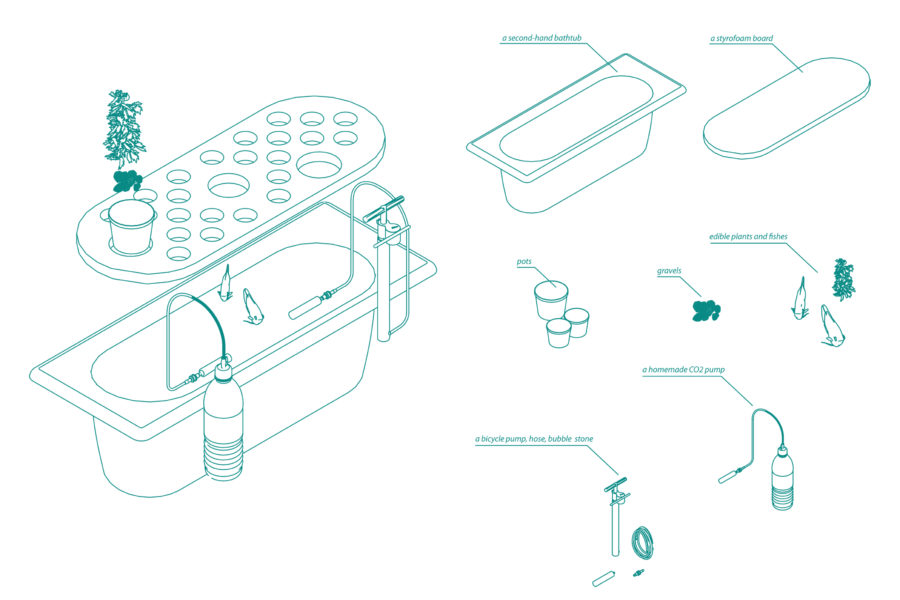
DIY aquaponic system
-

DIY biogas digestor
-
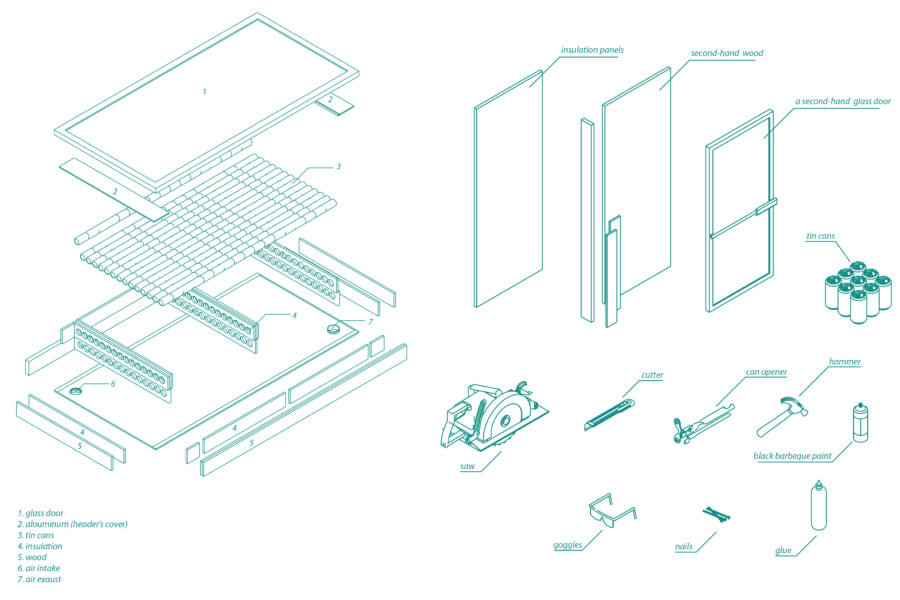
DIY solar furnace
-
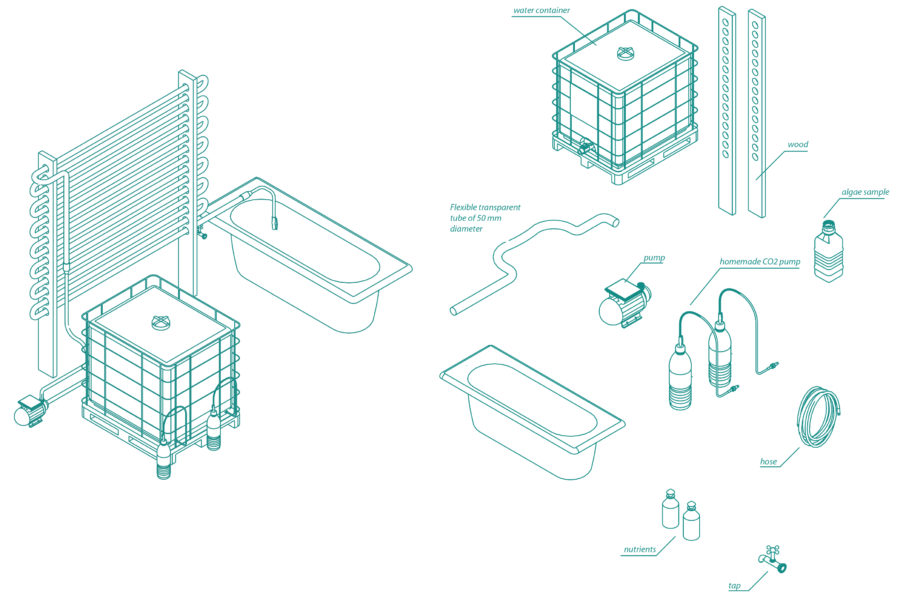
DIY algae bioreactor
-

Rotating house
-
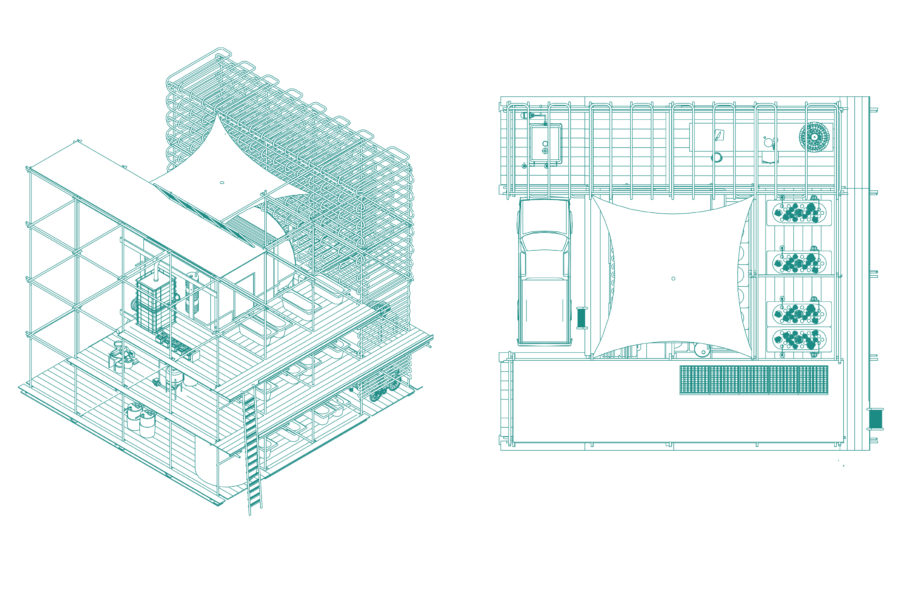
machine for sustainable living
-
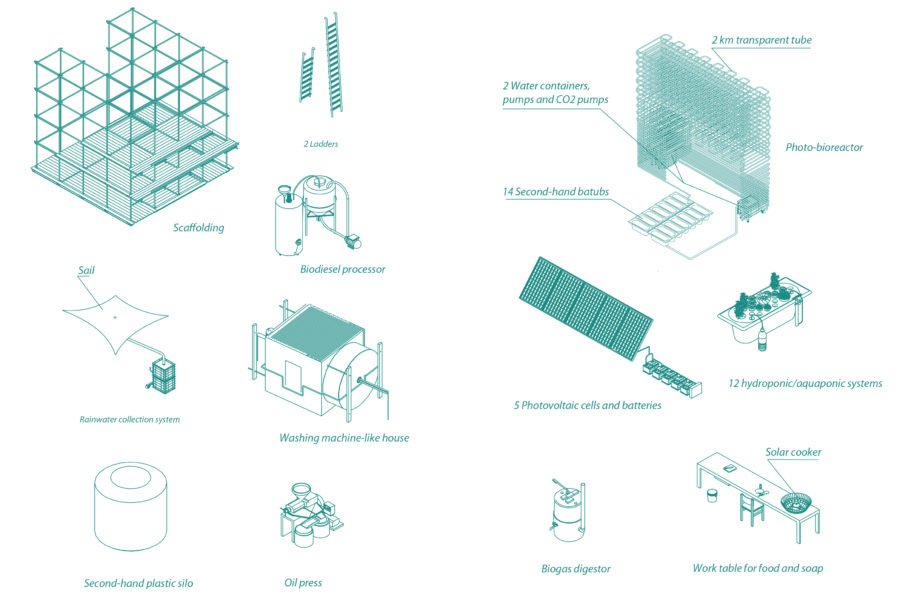
system parts